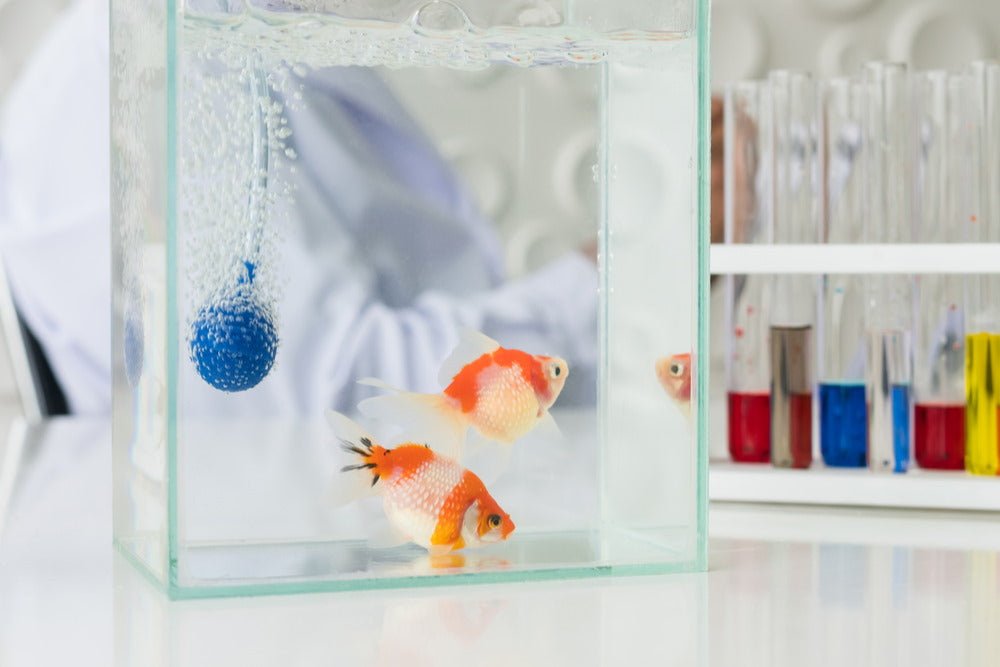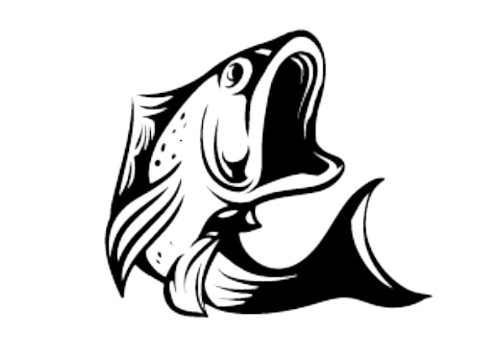How to Quarantine Fish Without a Tank
To quarantine fish without a tank, use a large plastic container and add a filter, heater, and water. Quarantining fish helps prevent the spread of diseases.
By following these steps, you can ensure the well-being of your fish during this period.

Credit: www.aquariumcoop.com
Understanding The Importance Of Quarantining Fish
Understanding the importance of quarantining fish is crucial to maintaining a healthy aquarium. It is essential to quarantine fish before introducing them to an established tank to mitigate the risks of disease and stress. Why quarantine fish? Because introducing new fish without quarantine can lead to the spread of infections and parasites, endangering the existing fish population.
By subjecting new fish to a separate quarantine tank, you can closely monitor their health and behavior, ensuring they are free from any potential illnesses. Quarantine also allows new fish to acclimate to the captive environment and reduces the chances of them transmitting diseases to other fish.
Remember, a proactive approach to quarantine can prevent potential disasters and safeguard the overall well-being of your aquarium. So, prioritize quarantine to keep your fish healthy and thriving.
Setting Up A Temporary Quarantine Tank
Setting up a temporary quarantine tank for fish can be done without the need for a traditional aquarium. The first step is to choose the right container, ensuring it is large enough to accommodate the fish comfortably. Creating a suitable environment for the fish is crucial, including maintaining proper water temperature, ph levels, and providing hiding spots.
To ensure the health of the fish, selecting the appropriate filtration system is essential. This helps to remove impurities and maintain water quality. Regular monitoring of water parameters and performing regular water changes are also important to keep the fish healthy during quarantine.
By following these guidelines, fish can be effectively quarantined without a tank, ensuring their wellbeing and minimizing the risk of disease transmission.
Steps To Quarantining Fish Without A Tank
Quarantining fish without a tank can be done successfully by following a few simple steps. First, acclimate the fish to the temporary tank slowly to minimize stress. Monitor water parameters regularly, ensuring stability to create a healthy environment for the fish.
This includes maintaining proper temperature, ph levels, and ammonia levels. In addition, it is important to identify and treat common fish diseases promptly. Keep an eye on any signs of illness, such as abnormal swimming behavior or visible abnormalities on the fish.
Swiftly address any health issues with appropriate medications or treatments. By following these steps, you can effectively quarantine fish without a tank, reducing the risk of introducing diseases to your main tank.
Alternative Methods Of Quarantining Fish
Quarantining fish without a tank is possible by employing alternative methods. One such method is utilizing a fish breeder box. This allows you to isolate and observe new fish while they adapt to their new environment. Another option is to use a pond or tub for quarantine purposes.
You can provide a larger space for the fish to adjust and ensure they are free from any diseases or parasites. Additionally, fish isolation units can be used to create a separate space within an existing tank. This allows you to monitor and treat individual fish without contaminating the entire tank.
By considering these alternative methods, you can effectively quarantine fish and ensure their health and well-being.
Essential Supplies For Fish Quarantine
Fish quarantine without a tank requires essential supplies like water testing tools and maintenance equipment. Different types of fish medications have specific uses in quarantine. Proper food and feeding considerations must be made during this time. It is important to ensure the health and safety of the fish.
By following these guidelines, you can successfully quarantine fish without a tank.
Maintaining And Gradually Transitioning Fish To A Permanent Tank
Quarantining fish without a tank involves maintaining and gradually transitioning them to a permanent tank. Regular water changes and cleaning procedures are essential. The duration and observance requirements for quarantine should be strictly followed. To safely introduce fish to the main tank environment, it’s crucial to acclimate them slowly.
This process helps prevent stress and disease outbreaks. By gradually adjusting water parameters and monitoring fish behavior, you can ensure a smooth transition. Pay close attention to any signs of illness during this period. Once the quarantine period is over, carefully introduce the fish to the main tank while keeping an eye on their interactions with existing tank inhabitants.
Following these steps will help keep your fish healthy and ensure a successful integration into the tank.
Troubleshooting And Common Challenges
Quarantining fish without a tank can present various troubleshooting and common challenges. One major concern is addressing fish stress and aggression during quarantine. Stress levels can rise due to unfamiliar surroundings or the presence of new tank mates. Keeping a close eye on water quality is crucial for maintaining a healthy environment.
If water parameters are not properly monitored, fish can suffer from issues like ammonia poisoning or ph imbalances. Treating quarantine-related problems such as parasites or bacterial infections is another key aspect. It is important to promptly recognize any signs of illness and take necessary steps to combat them.
Providing proper care and attention during the quarantine process is essential for the health and well-being of the fish.
Tips For Successful Fish Quarantine
Researching and understanding the specific needs of your fish is crucial for a successful quarantine. Patience and attentiveness are key during this process. Seek advice from experienced fishkeepers or professionals to ensure you’re taking the right steps. Taking the time to learn about quarantine methods can help you prevent diseases and maintain the health of your fish.
By carefully following these guidelines, you can safely quarantine fish even without a tank. Remember to create a stress-free environment for your fish, providing suitable food and water conditions. Pay attention to any signs of illness and take prompt action if necessary.
With proper care and attention, your fish can thrive in a quarantine situation.
Frequently Asked Questions On How To Quarantine Fish Without A Tank
Can I Quarantine Fish In A Bucket?
Yes, you can quarantine fish in a bucket. To do this, follow these steps: first, clean and sanitize the bucket thoroughly to create a safe environment for the fish. Next, fill the bucket with water that matches the fish’s current tank water parameters.
Then, carefully transfer the fish into the bucket, ensuring not to stress or harm the fish in the process. Monitor the fish closely and observe for any signs of illness or disease. It is advisable to use a heater and air pump to maintain optimal water temperature and oxygen levels.
Also, perform regular water changes to keep the water clean and healthy for the fish. Remember, quarantine is essential to prevent the spread of diseases to other aquarium inhabitants.
What Is The Best Method To Quarantine Fish?
The best method to quarantine fish is by setting up a separate tank, ideally with a filter and heater. Place the new fish in the quarantine tank to observe them closely for any signs of illness or disease. It is important to monitor their behavior, eating habits, and appearance during this time.
Perform regular water tests and maintain proper water conditions to ensure the fish’s health. Quarantine should last for at least two weeks to ensure that any potential diseases are identified and treated before introducing the fish to the main tank.
It’s also recommended to consult with a veterinarian or a local fish expert for guidance on proper quarantine procedures. By following these steps, you can minimize the risk of introducing diseases or parasites to your existing fish population.
Do I Really Need A Quarantine Tank?
Yes, having a quarantine tank is essential for several reasons. First, it allows you to isolate new fish before introducing them to your established aquarium, preventing the spread of diseases and parasites to other fish. Secondly, if you notice any signs of illness or abnormal behavior in your fish, you can promptly transfer them to the quarantine tank for observation and treatment, without risking the health of the other fish in your main tank.
Additionally, a quarantine tank provides a stress-free environment for fish that may require medication or special care, helping them recover faster. It also serves as a backup plan in case of emergencies, such as a damaged main tank. Overall, a quarantine tank is a crucial tool for maintaining the health and well-being of your aquarium inhabitants.
How Do You Quarantine Fish Without A Filter?
To quarantine fish without a filter, follow these steps: 1. Set up a separate tank or container for quarantine purposes. 2. Fill it with clean, dechlorinated water at the same temperature as the main tank. 3. Add aeration using an air stone or surface agitation to maintain oxygen levels.
4. Perform regular water changes to keep the water clean and stable. 4. Monitor water parameters such as ammonia, nitrite, and ph to ensure a healthy environment. 5. Use a heater to maintain a suitable temperature for the fish. 6.
Feed the quarantined fish a balanced diet to support their immune system. 7. Observe the fish closely for any signs of illness or abnormalities. 8. Avoid introducing any new fish to the main tank until the quarantine period is over.
Remember, quarantining fish without a filter requires more diligent monitoring and maintenance.
Conclusion
Quarantining fish without a tank is an effective way to ensure the health and safety of your aquatic friends. By following the steps outlined in this blog post, you can provide a suitable temporary home for your fish while preventing the spread of potential diseases.
Remember to choose an appropriate container, provide proper filtration and aeration, maintain optimal water parameters, and monitor your fish closely for any signs of illness. It’s also crucial to maintain good hygiene by regularly cleaning the container and disinfecting any tools or equipment used.
By taking these precautions, you can minimize the risk of introducing harmful pathogens to your main aquarium. With careful planning and attention, you can successfully quarantine fish without a tank and promote a harmonious and healthy aquatic environment.
